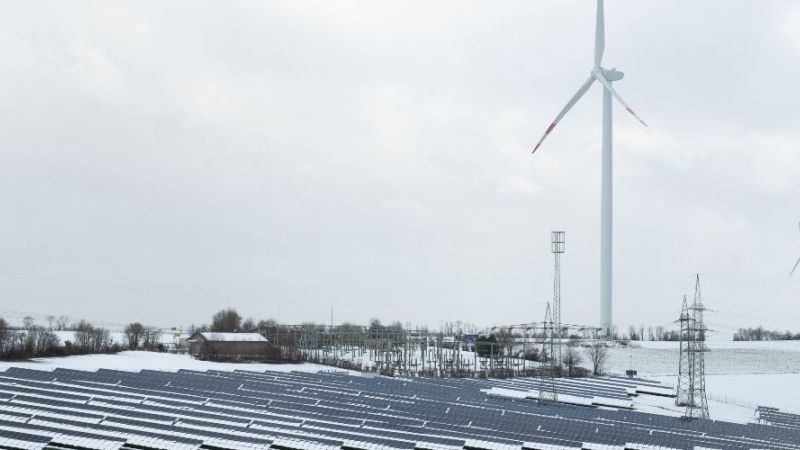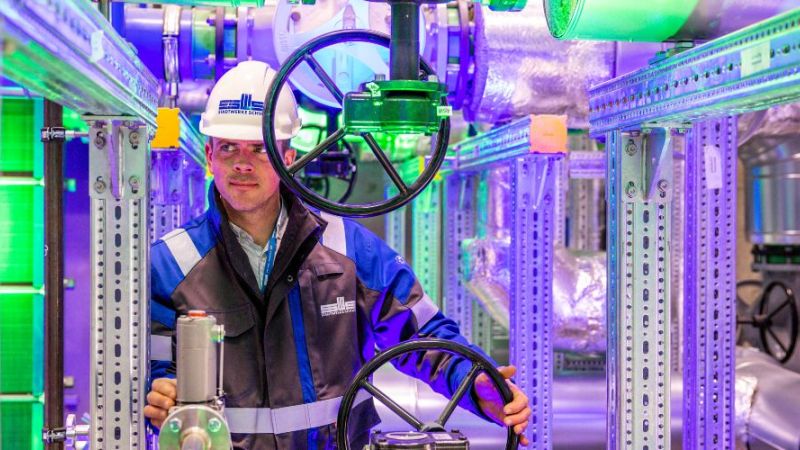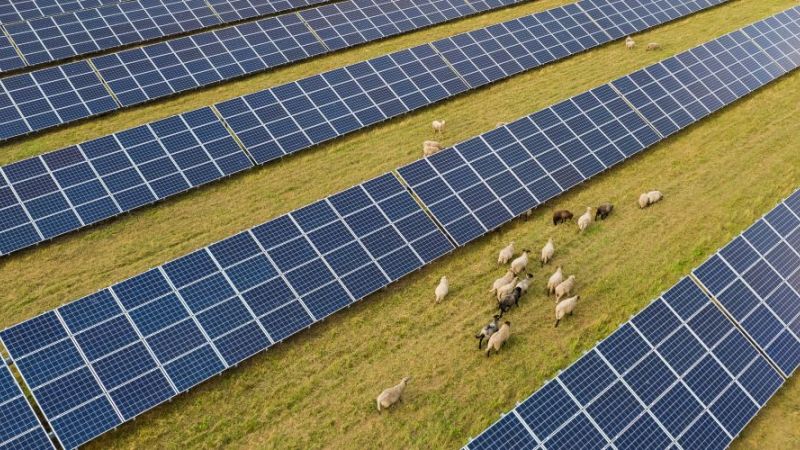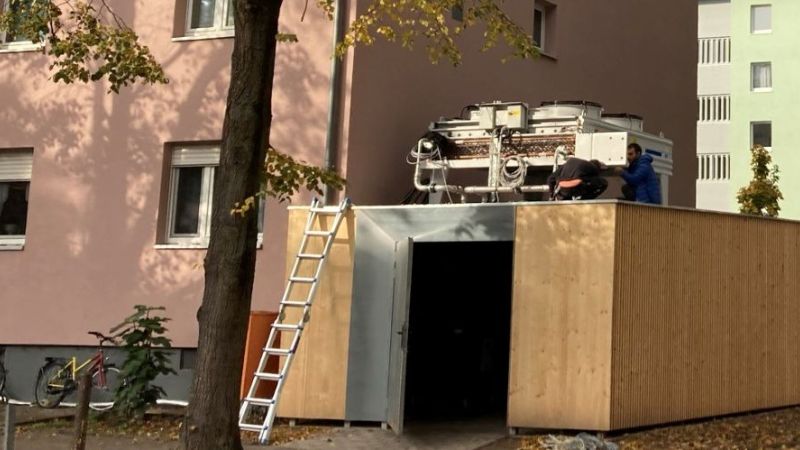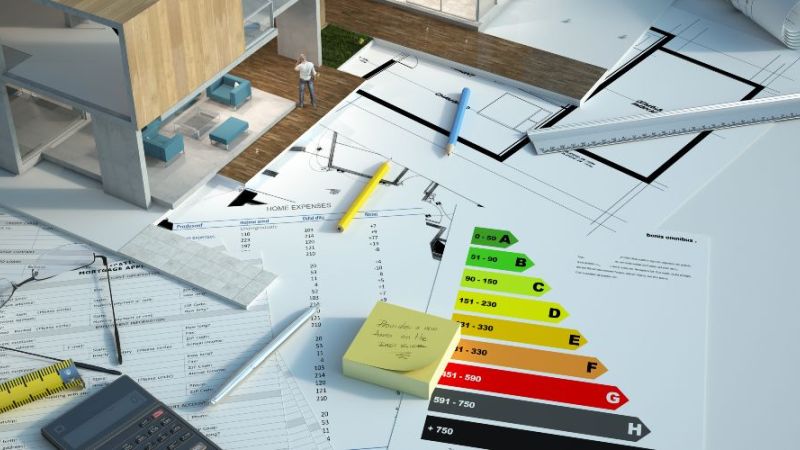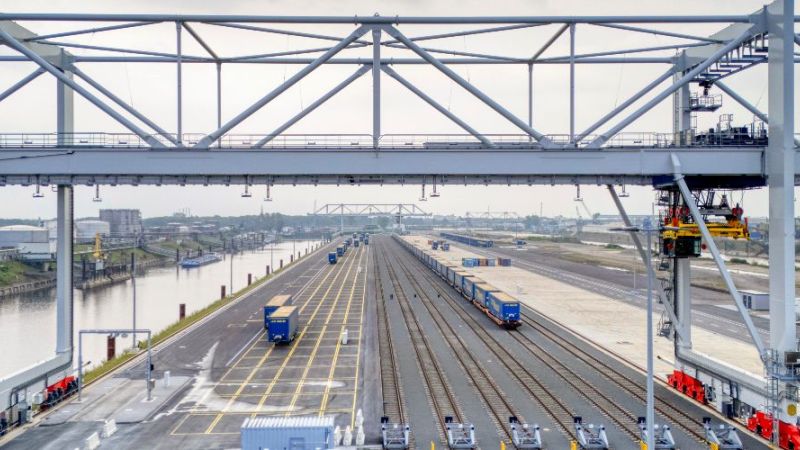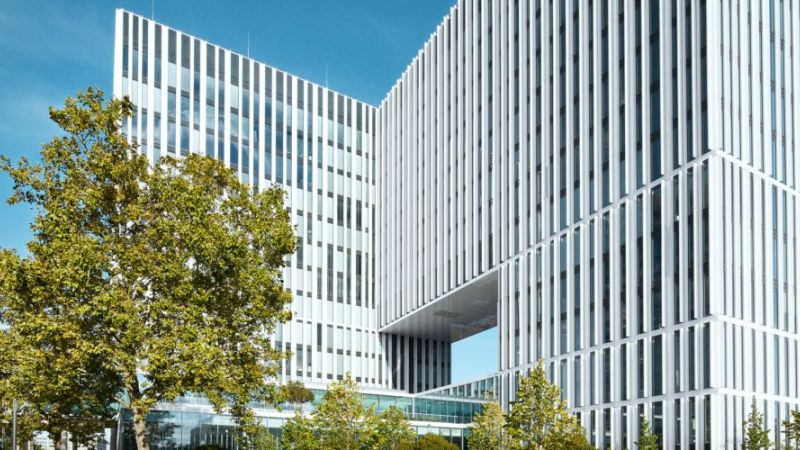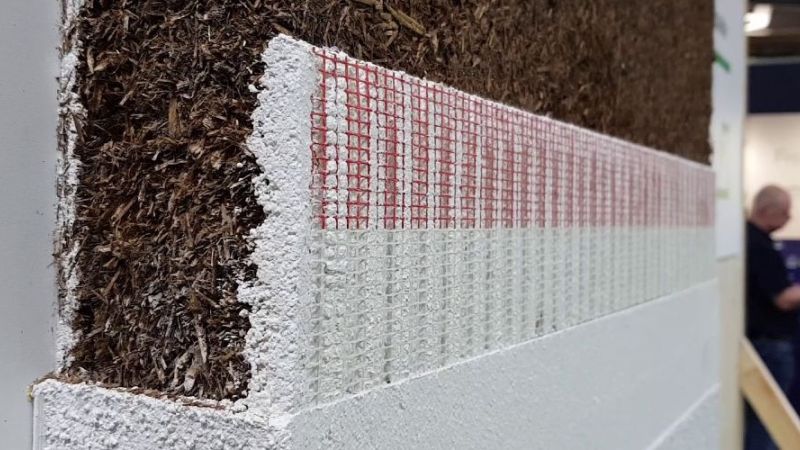 ©duisport
©duisport
Unique in Europe
A Climate-Neutral Container Terminal Is Being Built in the Port of Duisburg
Where hard coal was once stored, a sustainable energy system is now being established. On a former coal island, hydrogen-based energy will be generated and stored. Researchers are translating their theoretical concepts into practical applications at the container terminal.
Ports are mainly used to handle goods. Larger port areas are also often home to industrial and commercial enterprises. The building structure is generally homogeneous – most of the buildings found here are production and storage halls. Energy use and supply cannot be compared to conventional residential or mixed-use districts. “Inland ports are special urban districts with their own energy requirements,” says Dr. Anna Grevé, scientific head of the recently launched enerPort II project and Head of Electrochemical Energy Storage at the Fraunhofer Institute for Environmental, Safety and Energy Technology (UMSICHT). It is precisely these unique features that offer great potential for implementing integral energy concepts and energy transformations. How inland ports can be supported in this process was the question addressed by scientists in the now completed enerPort I project. The scientists developed technology-neutral and transferable overall concepts for the use and supply of energy in inland ports.
Now, the scientists want to implement their theoretical findings at the new container terminal on the coal island in Duisburg’s inland port. One of the objectives of enerPort II is to create Europe’s first net-zero container terminal. “Specifically, we will implement a sustainable, hydrogen-based energy concept that aims for a high level of self-sufficiency,” says Alexander Garbar, Deputy Head of Corporate Development and Sustainability Manager at project partner duisport. “An intelligent local energy network couples and controls renewable energy in the form of photovoltaic and hydrogen-based combined heat and power plants with electrical and thermal energy storage systems as well as hydrogen storage and consumers such as onshore power, charging stations, and crane systems.”Key components for this are fuel cell systems and hydrogen engines for power generation as well as battery storage systems.
The initial focus is not on transforming the energy and industrial system to one based solely on hydrogen. Instead, the experts aim to integrate hydrogen and the associated technologies into a conventional energy system. However, the system at the terminal will be expandable. For example, it is conceivable that hydrogen will eventually be produced on site from renewable energy or that a hydrogen locomotive will be used. “This will make the terminal the anchor point and nucleus for the transformation process of the entire Port of Duisburg,” says Alexander Garbar.
In addition, the researchers will investigate how the inland port could supply neighbouring districts with energy. This will be possible during periods of surplus electricity production at the terminal. Photovoltaic modules and films on roofs and façades could provide the required electrical energy. The production and storage halls at Duisburg’s inland port with their large rooftop areas provide a good basis for this.
The research project enerPort II is being funded by the German Federal Ministry for Economic Affairs and Climate Action (BMWK) as part of the hydrogen technology offensive. This funding call is one way in which BMWK wants to encourage the implementation of the National Hydrogen Strategy in the form of applied energy research. (bs)

